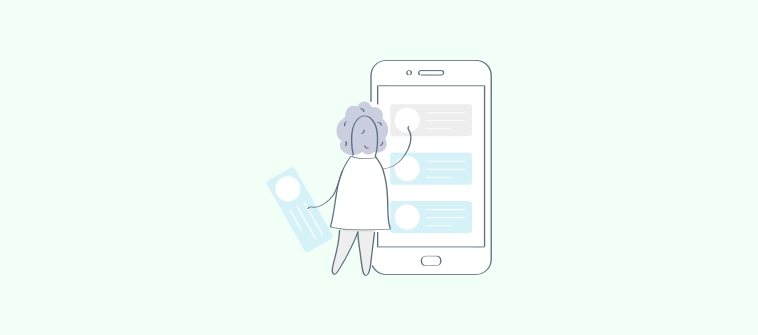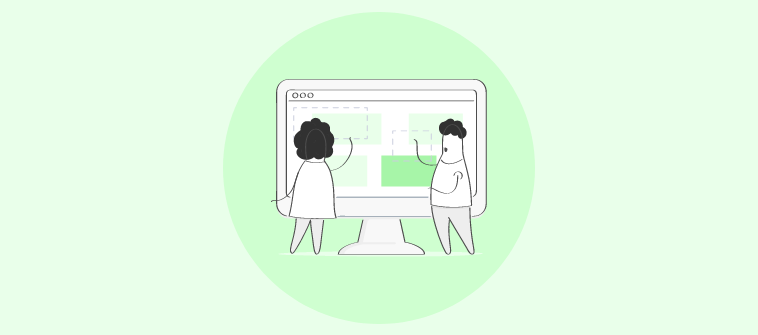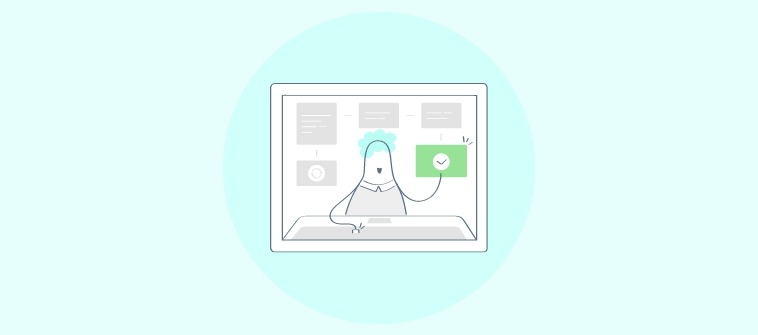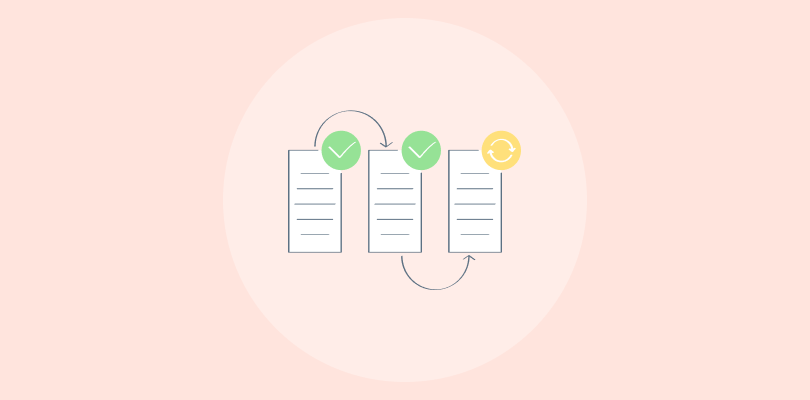There are many approaches to project management, especially in software development. Among these, waterfall project management is one of the more interesting ones, seeing as it stems from the old days of the construction and manufacturing industries; it was not specifically designed with software development in mind.
So, what is the waterfall methodology? Essentially, we’re talking about a project methodology in which the project is completed across distinct stages, itching step by step to the final release to end-users. To put it simply – you create a big plan in the beginning, and proceed along with a linear execution; hoping that no changes to the plan will be needed.
The waterfall approach to project management is what you get when you apply traditional project management to software development. With that in mind, there’s no single inventor of Waterfall; that’s just the name that this methodology got once other methodologies were implemented – such as agile project management.
Many people believe that the waterfall methodology of project management isn’t the best one when it comes to software development. As we’ve mentioned above, this methodology was inherited from the construction industry, in which further iterations weren’t an option.
In order to give you an idea of a waterfall model example project, imagine the construction of a bridge. Once you’ve completed the foundation, you can’t improve it any further. But seeing as software is much more dynamic and prone to changes, the waterfall approach to project management isn’t always the best idea. However, there are some pros to using this approach as well; so we’ll explore both sides of the coin below!
Phases of Project Management in Waterfall Methodology
Naturally, the specific phases for any project may vary according to the details; especially in regards to which project management software you use. Generally, though, they include the following steps:
#1 Requirements
In this phase of the project, the team gathers a lot of information regarding the requirements of the project. This is done in many different ways; from questionnaires and interviews to team brainstorming sessions. If you were designing software for cash registers, for example; this is where you’d do market research on the expenses and different features you need. Once this phase is done, you should be clear about what project requirements you’re facing – and produce a document on this that should be circulated throughout your team.
#2 Design
Using the documents that you’ve established in the requirements phase, your team will work on the system design. In this phase, there will be no specific coding; you’ll just be settling specifics like hardware requirements or the programming language you’ll use. This is particularly important for the waterfall methodology, as it focuses on getting everything right in the first iteration.
#3 Implementation
This is the first phase where you’ll actually do some coding. The team’s programmers will use the information from the design stage to come up with a functional product. Generally, they’ll create different segments of the code in different pieces, to be assembled and integrated at the end of the implementation phase or at the beginning of the testing phase.
#4 Testing
Once you’re finished with all of the coding, the actual testing of your software can begin. So, going back to the example of cash register software, this is where you test your product on applicable hardware. The testers file methodical reports that document any issues. And if there are any truly big problems, you may need to bring your project back to phase one.
#5 Deployment
At this stage in our waterfall model example project, all of the production work is largely complete; all that’s left is for your team to submit the final iteration for release and further maintenance.
#6 Maintenance
At this point, the product is finished and the clients are already using it. In our waterfall project example, your software for cash registers is being implemented in retail stores. At this point, you may have to produce updates and patches that deal with potential issues.
Read More: Critical Chain Project Management: Everything You Need to Know
Advantages of Using Waterfall Project Management Methodology
While the waterfall project management method isn’t the most viable when it comes to software development, there are some advantages to using it as well.
1. Detailed Documentation
Seeing as this project management methodology doesn’t make it easy to return to a previous step, you are guided into making a really comprehensive and detailed project documentation from the very beginning; listing any requirements that come to mind.
2. No Lost Knowledge
With such a comprehensive knowledge base in the project, you don’t stand to lose much if anyone decides to leave. And also, if you take on someone new, you won’t have to spend a lot of time to acquaint them with the project. They can easily familiarize themselves by going through the project documentation.
3. Better Time Management
Seeing as everyone knows what their work will be from the very start, they can plan out their workflow better from the beginning. This reduces the instances of wasting time in back and forth interactions that can cause project delay.
4. Clarity
As you may have gathered, waterfall projects have very clearly understandable and separate phases. Because of that, the management is pretty straightforward, and even people who aren’t developers can understand what’s going on.
5. Precise Client Expectations
With the waterfall method, clients are aware of both the project timeline and the production costs in advance. That way, they’re able to manage their own cash flow with more ease.
6. No Client Input Needed
Once the first requirements stage is complete, there is next to no client input required. Sure, there might be occasional status meetings, approvals, and reviews; but you don’t have to coordinate with the client on a daily basis.
7. Progress Measuring
Seeing as waterfall projects have a very clear outline, measuring progress is quite easy; using a Gantt chart is more than enough.
8. Better design
Because of the importance of the design phase for the waterfall project management methodology, the design of the product is bound to be better and more detailed than it otherwise would. Thus, products made this way are generally more cohesive, as all the features are designed right from the start.
Disadvantages of Waterfall Project Management Methodology
On the other hand, there are also some disadvantages to using the Waterfall method. We’ll take a look at them in detail here.
1. No Going Back
When you’re done with one stage and activity, going back to make alterations proves to be expensive and difficult. While this does make the design and planning better, it also puts a lot of pressure on the initial plan being correct.
2. Can’t Make A Mistake In The First Phase
Seeing as everything relies so heavily on the first requirements phase going over well; the project is basically doomed if you make any sort of error here.
3. Deadline Inflation
With the linear nature of the waterfall methodology in mind, if you’re late with one activity – all the subsequent activities won’t be finished on time either; including the final project deadline.
4. Buggy Software
Seeing as the testing is only done once the project nears its end, many development teams rush that phase of the project in order to meet their deadlines and acquire the incentives. Consequently, this small win produces a sub-par product with a lot of bugs.
Where You Should Use Waterfall
When it comes to where you should use the waterfall project management methodology, consider it for projects where:
- The requirements, scope, and budget are initially fixed; a one-off thing where you wouldn’t do any further development;
- There is an accurate work estimation; you’ve already performed the same kind of work before, and you know the technology well;
- There is no space to iterate (like developing software for heart rate monitors)
- The project is not high-risk (you’re making a clone of a functional and tested product)
- You have a particularly hard deadline.
On the other hand, we don’t recommend using waterfall in projects where:
- The quality is less important than the working prototype (if you need to test for market demand first);
- When you’re not sure what the final product needs to look like;
- When a client is not sure of what they require from the start;
- When the product is designed for an industry in which standards change rapidly;
- When user feedback is an essential part of the production cycle
Now everything being said and covered about waterfall management, let’s take a look at some frequently associated questions with project management types:
Q. What is the Difference Between Waterfall and Agile?
In many cases, Agile is often mentioned besides Waterfall, as a stark contrast. And the primary difference between these two methodologies is that waterfall isn’t good for projects which require constant change and adaptability; while agile is the opposite. That’s why more software development projects use the agile methodology. With agile, the project culture allows for making significant changes at any point in the development cycle.
Q. How does a Waterfall Model Work?
Waterfall Model works in sequential order, wherein all the developments are divided into specific stages. The whole project is planned and designed in a linear manner and there is no room for big errors or changes. It is a conceptual model completely in sync with SDLC processes.
Q. Is Agile more Expensive Than Waterfall?
If you’re asking about whether agile is more costly than waterfall – there is no right answer. Or rather, this solely depends on the nature of the project. Should the project require making any significant changes at any phase past the initial one; agile will be more affordable than waterfall.
FREE. All Features. FOREVER!
Try our Forever FREE account with all premium features!





